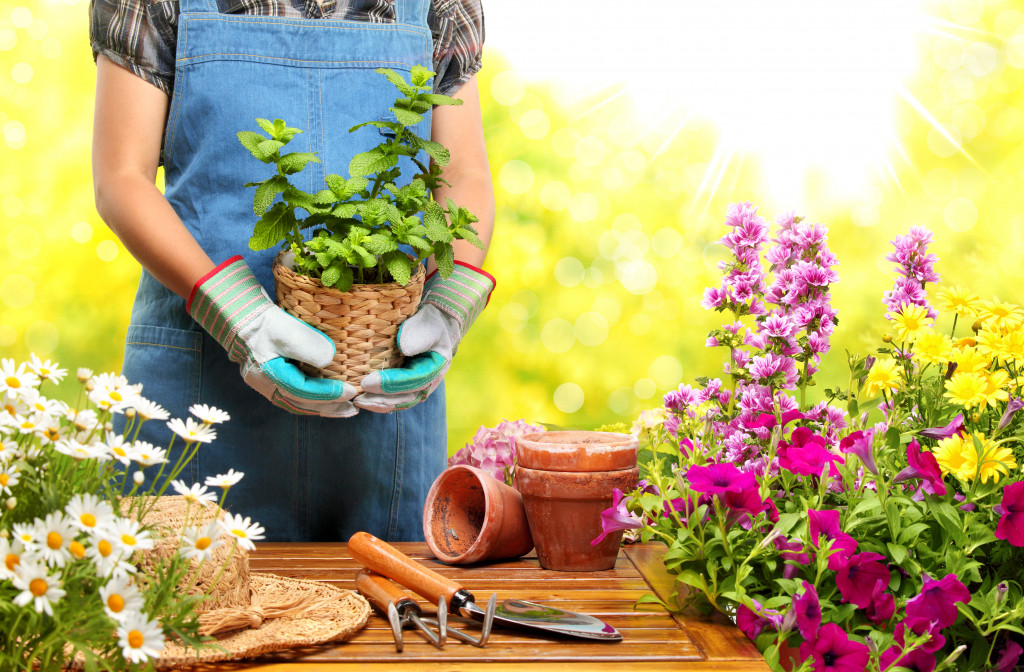Sustainable gardening means growing plants in a way that is not damaging to both the environment and your wallet. It’s about replacing chemicals with greener alternatives to achieve a healthier harvest. This type of gardening helps you maximize your resources and reduce your carbon footprint.
Below are simple and affordable ways to make your garden beds more eco-friendly.
Soil Testing
A simple soil test is the first step to a healthy crop production program. Knowing the nutrients present in your soil helps you pick the best crops to plant, minimizing the need for fertilizers. Excessive fertilizers often result in soil imbalance, which can contaminate your water supply and surrounding environment.
Soil test kits are readily available online or at your local nursery. Most varieties are affordable and easy to use. You’ll be able to measure your soil’s pH values quickly and add the necessary type and amount of fertilizer and compost to maintain its health.
Mulching and composting
Composting is the natural process of turning green waste likes weeds, leaves, flowers, and food scraps into nutrient-rich soil. It is free of any chemical material making it healthy and safe for crop production. The easiest way to make compost is to pile up all your green waste in a bin and wait a year for it to properly decompose. Some gardeners speed up the process by watering the waste or using specialized containers. Once it’s ready, compost can be added or dug into garden beds to supply plants with more nutrients.
In contrast, mulch is the protective layer of organic materials placed above the soil. It helps control weeds, retain moisture, prevent soil erosion, and even make your garden bed look more polished and attractive. Organic mulch also nourishes the soil as it gradually decomposes.
Mulch can be made out of organic residues including hay, leaves, bark, sawdust, newspaper, cardboard, and animal manure. Simply spread around 2-3 inches of mulch around your garden bed for a cost-efficient, protective barrier.
Waste Water Recycling
Used water can be used for your plant beds as long as it’s not contaminated with oil or cleaning detergent.
Using rainwater for your gardening can eliminate many chemical salts and harmful minerals from your soil.
One way to harvest rainwater is through drainage bioswales. These are subtle channels designed to cleanse stormwater runoff from toxins, making it safe for gardening. With a bioswale, water is filtered by plant roots and soil and goes directly through your landscape.
You can also use rain barrels to collect and store rainwater from your roofing. Stoked Oak Landscapes, a sustainable gardening firm in California, recommends using a 55-gallon drum for sufficient storage a sturdy screen grate to keep dirt and insects out. A typical rain barrel is cost-efficient and easy to construct. Just place it under any residential gutter down spout to maximize water collection.
Seed saving
Instead of purchasing seeds every year, you can save seed heads and store them in a dry space until the next growing season. This won’t only lower your costs but also bring you better harvest outcomes. Storing until the next season allows seeds to adapt to the climate and produce better crops with greater disease resistance.
Additionally, saving the seeds from your largest and earliest ripening crops ensures the same qualities in the next generation. While all seeds can be saved, beginner seed savers might want to concentrate on tomatoes, peppers, and squash seeds first as these are often the easiest to harvest and store.
Sustainability is a lifestyle that promises long-term benefits. Using just one of these sustainable methods will not only make your garden cleaner, but also reward your household with better health and cost-savings.


